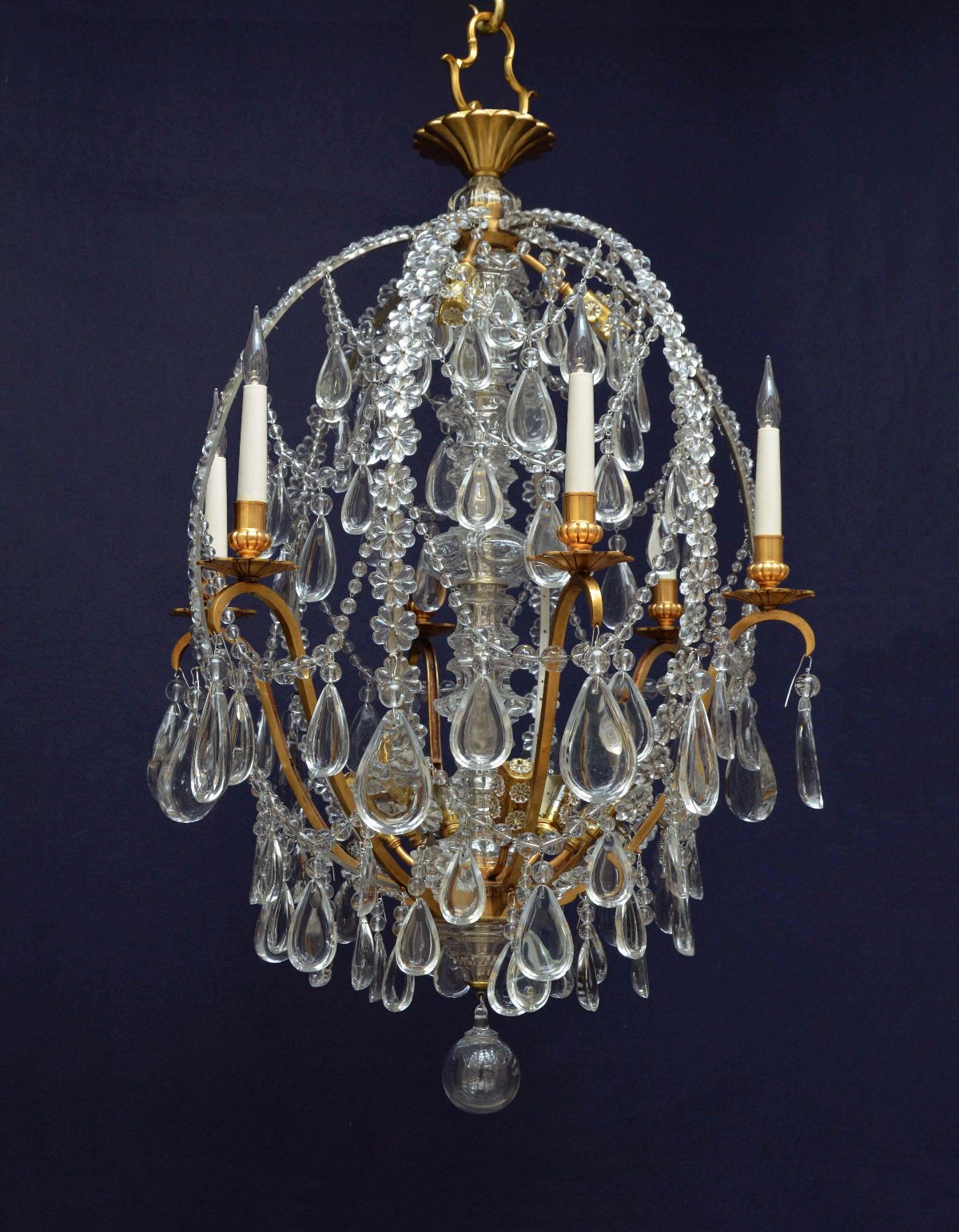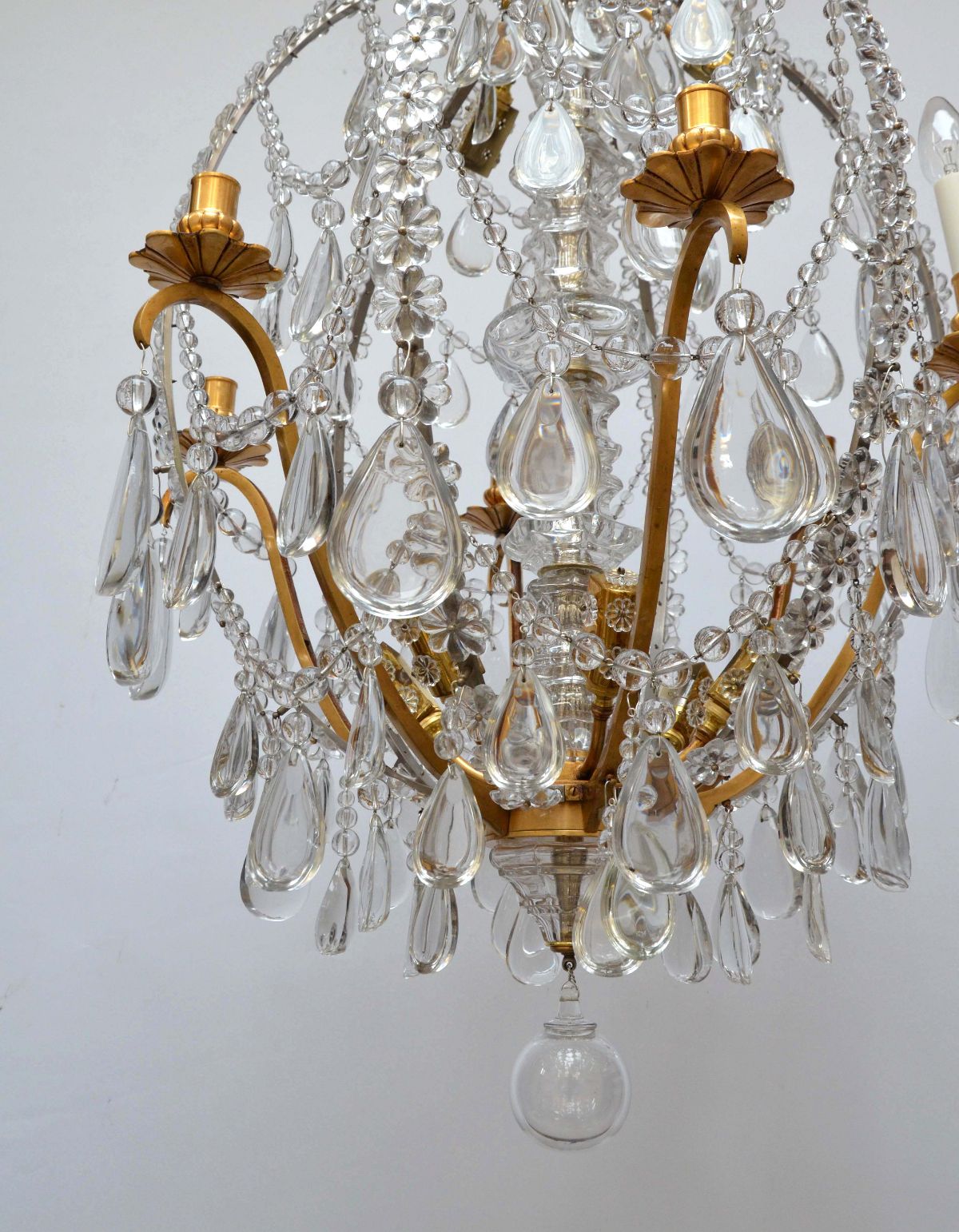French six-branch ‘Raindrop’ Chandelier of elliptical form
test
French six-branch ‘Raindrop’ Chandelier of elliptical form
5977
French six-branch ‘Raindrop’ Chandelier of elliptical form:
the central glass baluster stem bearing six gilt candle-branches and curving struts decorated with glass rosettes up to handsome top loop; dressed profusely with graduated bead festoons and pear-shaped ‘raindrop’ pendants; with hollow ball finial. Circa 1910 and restored with twelve further interior lights.
| Height: | 43½" | - | 110.0cm |
| Width: | 25¼" | - | 64.0cm |
Glossary Words
baluster
A term used to describe the stems of chandeliers, meaning shaped like a balustrade; curvaceous, with a series of urns.
gilded, gilt
A very thin layer of gold applied to brass or bronze.
festoon
A hanging garland of prisms or flowers.
Blades, John
John Blades (c.1751–1829) established his chandelier and glass show room at Ludgate Hill in 1783 and remained there until his death. Blades quickly became world renowned for the quality and intricacy of his glass design. His was the first English glass company to open a branch in India. In 1789, he was appointed Cut Glass Manufacturer to King George III and was known as 'the great glass man of Ludgate Hill'. One of the defining aspects of Blades’chandeliers are the long oblong drops, designed by architect J.B.Papworth, architect of his showrooms, and described as being “full of prismatic beauty”.





